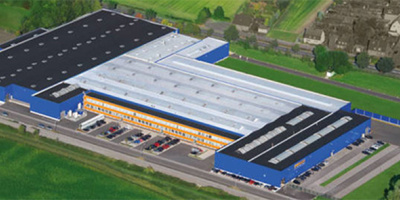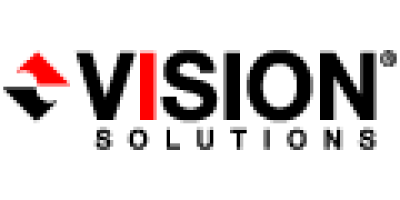Diagnosis
CMH has been serving the northern Michigan area for more than 50 years. It is a flagship hospital with a progressive board, medical staff, and administration.
CMH is proud of its independent position. It teams with other hospitals in the area, which gives it the ability to share medical information on an as-needed basis. CMH has several remote locations throughout northern Michigan, with outlying clinics in Cheboygan, Onaway, Pellston, and Indian River. The hospital also partners in a home health agency and provide services for an ambulance company. CMH operates independently and is managed by an administrative staff and a governing board of directors.
The IS department is a small department with fewer than 10 people. They have had an AS/400 running the hospital since 1991, and prior to this, they had a System/36. They also have an RS/6000, Novell, and NT running on a high-speed network via LAN and WAN technologies. The applications that are running on the systems include HBOC 2000 as the main Hospital Information System (HIS), Citation Lab, BlueWare Wellness Connection Electronic Medical Record, BlueWare Medical Record's Transcription System, and Medic Practice Management.
To elaborate about the problems with paper-based medical records, it is important to discuss the access of the record. The paper-based medical records system provides only one copy of the medical information--for example, one manila folder stuffed full of pharmacy and lab reports, transcription documents such as discharge summaries, history and physicals, HIV tests, mental health records, and reports regarding substance abuse. All this critical patient information is in a paper folder in the medical records department. The medical staff and caregivers do not have access to this medical information when and where they need it.
The cause of this problem is due to the way the information is generated, stored, and distributed. The impact that this paper-based system has on the hospital, doctors, nurses, and patients is huge.
The first impact is quality of care. Physicians are critically impacted by difficulty in accessing the information they need to do their jobs. If information about a patient's medical history is not readily available to doctors, several things could happen, including repeat tests. The financial impact is large due to the requirement to provide insurance companies with the needed documents to receive reimbursement for services performed.
The hospital's IS department started searching for a solution. Initially, they were disillusioned by the price of these systems, which are very expensive. The training time to teach doctors how to use the systems also takes weeks, and they knew their doctors would not take that much time away from their patients to learn a computer system.
So the search went on for a low-cost, easy-to-learn/install system. The information systems staff, along with the medical records staff, continued the pursuit of a paperless solution for medical records. The team at CMH in search of the electronic medical record attended several conferences and trade shows to evaluate the vendors and solutions available. Both data management and document management systems were considered.
BlueWare to the Rescue
The solution selected was the BlueWare Wellness Connection Electronic Medical Record System. The system was both a document management and data management approach to an electronic medical record (EMR) system. The system was selected because of its price, healthcare-specific robust security, lifetime encounter management, ease of training (30 minutes), and ease of installation (6 weeks).
The installation of the system began in the spring of the year and was available to physicians/admitting and others by summer. The installation team included the medical records director, IS analyst, and IS director.
Capturing the different data streams posed problems during installation, but those problems were quickly handled via IBM AS/400 and OnDemand/400 support lines. IBM experts were on the phone with the BlueWare engineers helping to answer every question and issue that came up.
Delicate Procedure
The electronic medical record system was first deployed in medical records. The medical records department receives 10 to 20 phone calls per hour requesting information from a patient record. Because the medical records department could now access the information online, they no longer had to do a chart pull to get the information. They were pleased with it not only because they could get their jobs done faster, but also because they avoided paper cuts.
Next, the hospital staff decided to extend the use of the EMR system to patient accounting. The patient accounting clerk's job is to ensure the hospital receives payment for the services performed. To receive payment, the hospital needs to provide completed insurance forms and documents as proof that care was provided. Prior to this system, it could take several weeks to pull all this information together. This department started to access the BlueWare Wellness Connection and shortened that cycle down to minutes instead of weeks. This one use alone cost-justified the system.
The next group that received the system was the emergency room. The training for all the end users is a 30-minute class. The users spend 15 minutes learning the two to four screens in the system and 15 minutes learning the security rules and monitoring of the system so they are aware of the seriousness of healthcare information confidentiality. The users experienced no problems when using the system. The only problem noted was that the rest of the hospital wanted access quickly, which was handled by helping the departments with more training classes.
Feeling Good
The BlueWare Wellness Connection Electronic Medical Record System helped solve the hospital's problems of access to the patient record by capturing the patient reports and information from the existing computer systems via COLD storage techniques. BlueWare also captured non-computer-generated reports via scanning techniques and other patient information via multimedia techniques. Once the disparate patient information is captured, it is securely stored under a simple folder tab system. Therefore, the patient information--including computer-generated reports, scanned documents, X-rays, MRIs, CAT scans, nuclear medicine, ultrasound, microscopic slide images, heart sounds, lung sounds, and video Cine loops including fluoroscopy--can all be accessed simultaneously by users with proper security. There is an extensive audit trail as required by medical record law as well as Health Insurance Portability and Accountability Act (HIPAA) law.
All in all, the BlueWare solution helps CMH to save lives because patient information is available for physicians and caregivers so they make proper diagnosis and treatment plans.
The Wellness Connection eliminates duplication of services, reduces lengths of stay, and enhances patient satisfaction. The Wellness Connection's robust security features enable the user to restrict access of medical information to those with a qualified need to know.
CMH and BlueWare both learned during the Wellness Connection project that there is beauty in approaching a difficult, complex problem with a simple approach and that doctors aren't the only ones saving people's lives; sometimes computers do, too.
Rose Odette is CEO of Blueware. She can be reached via email at
BlueWare Inc.
W. 13th Street
3060 Cadillac, MI 49601
Tel: 231-779-0224
Fax: 231-779-1002
Web: http://www.blueware.net/





















 More than ever, there is a demand for IT to deliver innovation. Your IBM i has been an essential part of your business operations for years. However, your organization may struggle to maintain the current system and implement new projects. The thousands of customers we've worked with and surveyed state that expectations regarding the digital footprint and vision of the company are not aligned with the current IT environment.
More than ever, there is a demand for IT to deliver innovation. Your IBM i has been an essential part of your business operations for years. However, your organization may struggle to maintain the current system and implement new projects. The thousands of customers we've worked with and surveyed state that expectations regarding the digital footprint and vision of the company are not aligned with the current IT environment. TRY the one package that solves all your document design and printing challenges on all your platforms. Produce bar code labels, electronic forms, ad hoc reports, and RFID tags – without programming! MarkMagic is the only document design and print solution that combines report writing, WYSIWYG label and forms design, and conditional printing in one integrated product. Make sure your data survives when catastrophe hits. Request your trial now! Request Now.
TRY the one package that solves all your document design and printing challenges on all your platforms. Produce bar code labels, electronic forms, ad hoc reports, and RFID tags – without programming! MarkMagic is the only document design and print solution that combines report writing, WYSIWYG label and forms design, and conditional printing in one integrated product. Make sure your data survives when catastrophe hits. Request your trial now! Request Now. Forms of ransomware has been around for over 30 years, and with more and more organizations suffering attacks each year, it continues to endure. What has made ransomware such a durable threat and what is the best way to combat it? In order to prevent ransomware, organizations must first understand how it works.
Forms of ransomware has been around for over 30 years, and with more and more organizations suffering attacks each year, it continues to endure. What has made ransomware such a durable threat and what is the best way to combat it? In order to prevent ransomware, organizations must first understand how it works. Disaster protection is vital to every business. Yet, it often consists of patched together procedures that are prone to error. From automatic backups to data encryption to media management, Robot automates the routine (yet often complex) tasks of iSeries backup and recovery, saving you time and money and making the process safer and more reliable. Automate your backups with the Robot Backup and Recovery Solution. Key features include:
Disaster protection is vital to every business. Yet, it often consists of patched together procedures that are prone to error. From automatic backups to data encryption to media management, Robot automates the routine (yet often complex) tasks of iSeries backup and recovery, saving you time and money and making the process safer and more reliable. Automate your backups with the Robot Backup and Recovery Solution. Key features include: Business users want new applications now. Market and regulatory pressures require faster application updates and delivery into production. Your IBM i developers may be approaching retirement, and you see no sure way to fill their positions with experienced developers. In addition, you may be caught between maintaining your existing applications and the uncertainty of moving to something new.
Business users want new applications now. Market and regulatory pressures require faster application updates and delivery into production. Your IBM i developers may be approaching retirement, and you see no sure way to fill their positions with experienced developers. In addition, you may be caught between maintaining your existing applications and the uncertainty of moving to something new. IT managers hoping to find new IBM i talent are discovering that the pool of experienced RPG programmers and operators or administrators with intimate knowledge of the operating system and the applications that run on it is small. This begs the question: How will you manage the platform that supports such a big part of your business? This guide offers strategies and software suggestions to help you plan IT staffing and resources and smooth the transition after your AS/400 talent retires. Read on to learn:
IT managers hoping to find new IBM i talent are discovering that the pool of experienced RPG programmers and operators or administrators with intimate knowledge of the operating system and the applications that run on it is small. This begs the question: How will you manage the platform that supports such a big part of your business? This guide offers strategies and software suggestions to help you plan IT staffing and resources and smooth the transition after your AS/400 talent retires. Read on to learn:
LATEST COMMENTS
MC Press Online